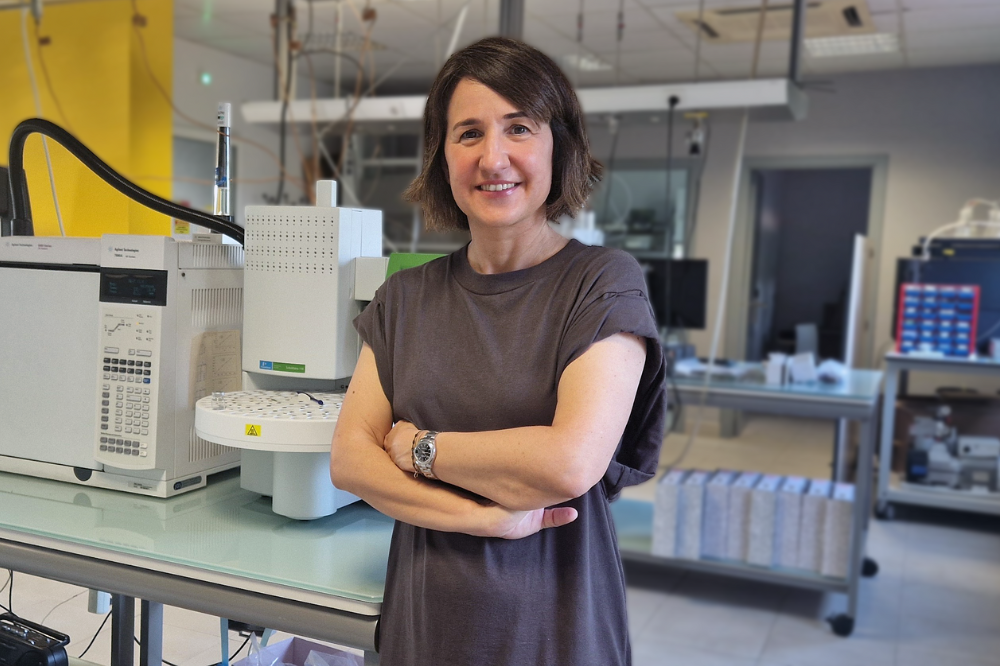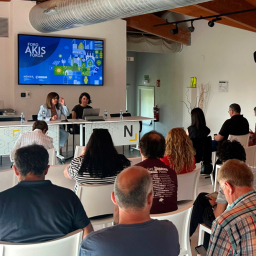NEW
Olazt Unamunzaga: “The goal is to bring science to the field in a direct, useful and understandable way.”
19 June 2025The transfer of knowledge between scientific research and the agricultural and livestock sector is one of NEIKER’s strategic axes. To reinforce this connection, the center has launched the BERRITZEN Plan, an initiative structured in three lines of action that, as the general director Olatz Unamunzaga states, directly involve farmers, technicians and research personnel.
What exactly is the BERRITZEN Plan and why does it arise?
BERRITZEN is a knowledge transfer plan that comes at a key moment for the agricultural and livestock sector, which needs to be strengthened, gain competitiveness and be valued accordingly. From NEIKER we want to take a step further in this direction: to bring science closer to the field in a direct, useful and understandable way. What we are looking for is that all the knowledge we generate really reaches those who need it and can be applied in a meaningful way.
This idea of connecting science and field appears as the central axis of the plan. What does this connection mean for NEIKER?
What we want is for science to have a real impact on the day-to-day life of the industry. And for that it is essential to change the approach: it is not only about research for the sector, but with the sector. We are committed to participatory, applied research based on active listening to their needs. This close and continuous relationship is what allows us to move towards a more profitable, more resilient model that is better prepared to face today’s challenges.
With this collaborative approach, BERRITZEN is articulated along three main lines. How is the plan structured and how are these three axes related?
We have designed the plan around three lines that complement each other and cover all phases of the transfer: from the identification of needs to the implementation of validated solutions.
On the one hand, there are the BERRITZEN Guneak, which are spaces for experimentation in real conditions. They will function as lighthouse farms, where innovative agricultural practices such as regenerative agriculture or agrovoltaics will be tested. The trials will be designed in agreement with the sector and open days will be organized to facilitate access to the results.
Then there is BERRITZEN Praktikak, which focuses on working directly with the technical staff that advises the sector. At NEIKER we have implemented a structure similar to that of the healthcare system: a reference figure, like a general practitioner, who detects needs in the different sub-sectors and channels them to the appropriate specialists within the center. This structure is reinforced by regular meetings and forums such as AKIS, which allow us to respond in an agile and targeted manner to specific problems.
And finally, there is BERRITZEN Ideiak, an annual call open to the sector so that farmers, technicians and agents can propose topics that they would like us to research or help transfer. The selected ideas can lead to new projects, transfer initiatives or stays of technicians at the center, which allow for a more direct and enriching exchange.
To develop the plan, we have a budget of approximately 1.7 million euros, which is distributed among these three lines according to the activities planned in each one.
Several experimental plots have already been set up within BERRITZEN Gunea. What is the benefit of extending experimentation to real farms?
The six current plots are located on NEIKER farms and are part of long-running trials linked to BALTSAN, the Basque network of infrastructures for agricultural sustainability and soil health. These are very solid scientific trials, but at BERRITZEN Guneak we want to go one step further.
Specifically, the idea is to complement these more complex trials with simple practices, not necessarily long-term, that can also be tested on real farmers’ farms. This allows us to see how certain techniques behave in specific contexts, with their particularities and limitations. And, above all, it makes the sector feel that it is an active part of the process. In short, working in real environments makes the results more useful, more adapted to day-to-day life and, therefore, more transferable.
This active collaboration with the sector is also central to Praktikak. How is this joint work articulated and how is it sustained over time?
At BERRITZEN Praktikak we want to leave behind the traditional model, in which the transfer was something that was done at the end of the process. Here we talk about a shared work logic from the beginning. Listening, building consensual roadmaps and generating a framework of trust in which we can work in a stable and close way with farmers, technicians and research personnel.
That is why we propose regular meetings, reference structures and forums such as AKIS, which allow us to realistically identify the sector’s challenges and jointly decide which practices make sense to transfer. This figure inspired by the “family doctor” plays a fundamental role, as he or she collects needs from the field and channels them internally to the appropriate NEIKER team. This ongoing approach allows us to fine-tune solutions, to make sure they are viable and that they really respond to what the industry needs.
And this involvement of the sector culminates in BERRITZEN Ideiak. How does this line work and what happens with the ideas received?
BERRITZEN Ideiak is an annual call that we open to the entire agricultural sector. Our aim is to offer a direct channel for farmers, technicians and other agents to propose topics that they consider a priority, both for research and for transfer.
Once the proposals are received, the center analyzes their viability, potential impact and alignment with our strategic lines. From there, some are converted into projects, others into transfer activities, and others can be developed through stays of technical advisors at our center. This is a way of ensuring that the knowledge responds to what the sector really demands.




